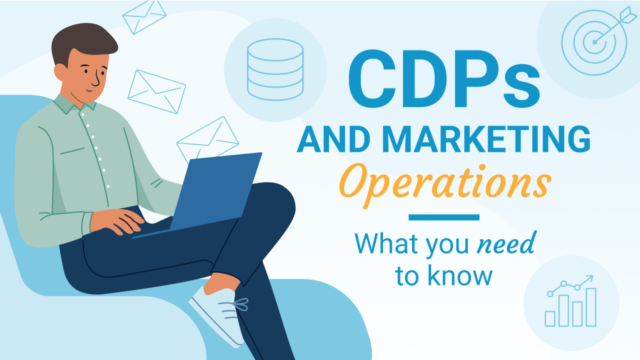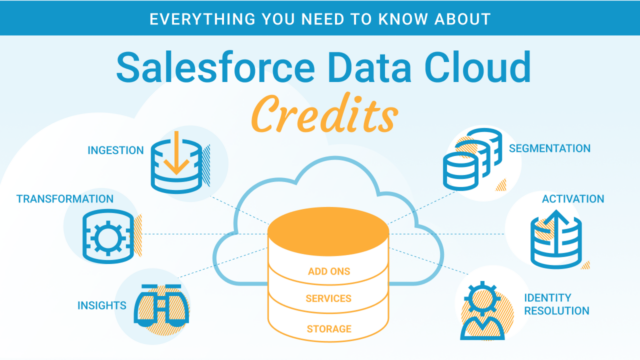How can a CDP help you with your Marketing Operations?
Well first, lets start with this: What is CDP?
A Customer Data Platform (CDP) is different from a CRM or Marketing Automation Platform. It is a software platform that collects and blends first-party customer data from a variety of sources and channels to build one unified, complete view of each customer or potential customer. This data can then be used to personalize user experiences at scale. The two most common use cases for a CDP are personalised customer experiences and targeted advertising.
Types of CDPs
There are four types of CDPs according to the Customer Data Platform Institute.
Data CDPs – A data CDP gathers customer data in real time, links data to identities and stores the data in a database that is accessible to external systems.
Analytics CDPs – Analytics CDPs allow marketing operations to design customer segments, track customers across sources and channels, and gain insights into customer intent and interest from customer behaviour and trends.
Campaign CDPs – Campaign CDPs combine data aggregation and intelligence with omni-channel coordination capabilities for laser focused segmented audiences. They differ from segmentations because they can specify different treatments for different individuals within a segment.
Delivery CDPs – Delivery CDPs assemble message delivery, customer treatment, data, and analytics through email, web site, apps, CRMs, advertising or a combination of delivery sources.
How can a CDP benefit Marketing Operations?
A CDP can benefit Marketing Operations in a number of ways:
Better ROI – Marketing teams can leverage insights of a CDP to create more effective campaigns that drive better results. This can lead to a higher ROI and increased revenue for Marketing.
Improved segmentation – A CDP enables the creation of targeted campaigns based on demographics, buyer behaviours and purchase history through the use of specialized segmentations and audience lists. These customized lists and campaigns can lead to conversions and can drive revenue.
Centralized data – A CDP allows for the centralized management of all customer data. This ensures that marketing teams have access to complete and accurate data, which can help in developing targeted and effective marketing campaigns.
Increased marketing efficiency – A CDP can help marketing teams streamline their operations by automating certain processes, like segmentations, campaign management and data integrations. This gives marketers more time and money to focus on more strategic tasks and initiatives.
Personalization – A CDP allows you to target specific users with relevant, personalised information across all channels and sources.
Suppression – Not only are you able to better target the people who will be the best fit for your business, you are also able to suppress those you do not want to market to with greater ease.
How Marketing Operations can plan for a CDP
Setting up a CDP requires some forethought. In order to get your CDP up and running you will need to follow these steps:
1. Define business objectives. Understand the specific goals you want to achieve.
2. Assemble a cross-functional team, including marketing, IT, data science and customer success.
3. Audit current systems and data. Map out what data is collected, formats and any gaps.
4. Identify the sources of data that you want to integrate into your CDP. This may include: customer interactions, transactions, and social media data.
5. Choose a CDP provider by researching which provider will meet your specific goals and needs. It should be scalable, integrate with your marketing stack, and have a friendly user interface.
6. Develop a strategy. Establish taxonomy, and naming conventions. Set guidelines for data collection, storage, and data governance.
7. Integrate all relevant systems, and connect your data sources to your CDP
8. Create a data schema that maps your data sources to your CDP
9. Customize your CDP by setting up workflows, rules and triggers
10. Once your CDP is configured it is important to validate and test to ensure it is set up correctly. Run pilot campaigns to validate functionality. Analyze results to identify areas for improvement, fine tune workflows, rules and integrations.
11. Provide training to your team on how to use the CDP for segmentation, activation and reporting. Ensure you have clear documentation.
12. Launch your CDP. It is essential to continue to monitor and optimize to ensure it is meeting your needs and providing value to your business.
13. Measure success. Regularly track metrics like campaign effectiveness, customer engagement, and ROI improvements.
The key to getting the most out of your CDP is to have a clear strategy and use the platform to collect, organize, and analyze data in a way that is actionable and drives value for your business. A well-implemented CDP can transform marketing operations, enabling better customer understanding, more effective campaigns, and measurable ROI improvements.
In summary
A CDP provides a way to unify data from multiple siloed data sources to build a single customer profile, segment your audience and activate personalized data across digital marketing platforms and ad networks. Marketing Operations teams can greatly benefit from a CDP, as it enables improved data-driven decision making and enhanced analytics, putting control of customer data in the hands of marketing teams.
Need help with your CDP? Or want to talk about how your organization could benefit from unified data? Get in touch. We love chatting about this stuff!



